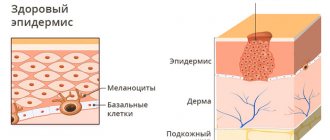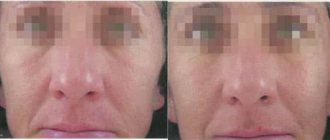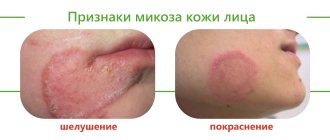Deep vein thrombosis (DVT) occurs when a blood clot (thrombus) forms in one or more deep veins in your body, usually in the legs. Deep vein thrombosis can cause leg pain or swelling, but may be asymptomatic.
- Symptoms of deep vein thrombosis
- Causes of deep vein thrombosis
- Risk factors
- Complications of DVT
- Prevention of thrombosis
DVT may be associated with diseases that affect the blood clotting process. A blood clot in your legs can also form if you have not moved for a long time, such as after surgery or an accident. But walking over extremely long distances can lead to the formation of blood clots.
Deep vein thrombosis is a serious condition because blood clots in your veins can travel through your bloodstream and become lodged in your lungs, blocking blood flow (pulmonary embolism). However, pulmonary embolism can occur without evidence of DVT.
When DVT and pulmonary embolism occur at the same time, it is called venous thromboembolism (VTE).
Symptoms
Signs and symptoms of DVT:
- Swelling of the affected leg. In rare cases, swelling appears in both legs.
- Leg pain. The pain often begins in the calf and may feel like cramping or soreness.
- Red or discolored skin on the leg.
- Feeling of warmth in the affected leg.
Deep vein thrombosis may occur without noticeable symptoms.
When to see a doctor
If you have signs or symptoms of DVT, contact your doctor.
If you develop signs or symptoms of pulmonary embolism (PE), a life-threatening complication of deep vein thrombosis, get emergency medical help.
Call 103
Warning signs and symptoms of pulmonary embolism include:
- Sudden shortness of breath
- Chest pain or discomfort that gets worse with deep breathing or coughing.
- Feeling dizzy or dizzy or faint
- Rapid pulse
- Rapid breathing
- Coughing up blood
Do you suspect deep vein thrombosis? Contact the professionals.
About tumors in the neck area
The neck is an important part of the human body because it connects the head to the torso. Therefore, new growths on it should at least give cause for concern.
Tumors and lumps are unnatural formations. They are divided into two types:
- benign;
- malignant.
Tumors prevent a person from living a normal life
Benign tumors do not appear for a long time and are easy to get rid of. Malignant ones, on the contrary, manifest themselves sharply, develop rapidly and over time become more difficult to get rid of.
The tumor can appear in any part of the neck.
Risk factors
Many factors can increase your risk of developing DVT, which include:
- Age. At age 60, the risk of DVT increases, although it can happen at any age.
- Sitting for long periods of time, such as while driving or flying. When your legs remain motionless for several hours, your calf muscles do not contract. Muscle contractions promote blood circulation.
- Prolonged bed rest, such as during a long hospital stay or paralysis. Blood clots can form in the calves if the calf muscles are not used for a long time.
- Trauma or surgery. Injury to the veins or surgery may increase the risk of blood clots.
- Pregnancy. Pregnancy increases pressure in the veins of the pelvis and legs. Women with an inherited bleeding disorder are at particular risk. The risk of blood clots from pregnancy can last up to six weeks after the baby is born.
- Birth control pills (oral contraceptives) or hormone replacement therapy. Both factors can increase the blood's ability to clot.
- Exposure to drugs or chemicals. Certain drugs can cause blood clots. Consult your physician before use.
- Overweight or obese. Excess weight increases pressure in the veins of the pelvis and legs.
- Smoking. Smoking affects clotting and circulation, which may increase the risk of DVT.
- Cancer. Some forms of cancer increase levels of substances in the blood that cause blood clotting. Some forms of cancer treatment also increase the risk of blood clots.
- Heart failure. Increases the risk of developing deep vein thrombosis and pulmonary embolism. Because people with heart failure have limited heart and lung function, symptoms caused by even a small pulmonary embolism are more noticeable.
- Inflammatory bowel diseases. Bowel diseases such as Crohn's disease or ulcerative colitis increase the risk of DVT.
- Personal or family history of DVT or PE. If you or someone in your family has had one or both of these, you may be at greater risk of developing DVT.
- Genetics. Some people inherit genetic risk factors or disorders, such as factor V Leiden, that make their blood clot more easily. The hereditary disease itself may not cause blood clots unless it is combined with one or more other risk factors.
- Risk factor unknown. Sometimes a blood clot in a vein can occur without an obvious underlying risk factor. This is called unprovoked VTE.
Modern methods of treatment
Usually, with a secondary malignant skin lesion, metastases are present in other organs, so the general principles of treatment are the same as for any metastatic cancer. Chemotherapy, targeted therapy, immunotherapy are prescribed. Radiation therapy and surgery are used - but mainly for palliative purposes, since there is no convincing evidence that in this case these methods help to increase the life expectancy of patients.
Some scientific studies have shown that surgery helps increase the survival rate of patients with skin metastases from lung and stomach cancer. In other cases, operations are used to cope with symptoms (for example, if a tumor ulcerates or bleeds), remove disfiguring tumors, and improve the patient’s quality of life. Radiation therapy can achieve a good long-term palliative effect in the case of skin metastases in some malignant kidney tumors.
In some cases, other treatment methods are used:
- Imiquimod cream has an immunomodulatory effect, helps strengthen the antitumor immune response and destroy skin metastases in melanoma;
- cryotherapy - destruction of tumor tissue using very low temperatures by applying liquid nitrogen;
- photodynamic therapy is a procedure during which a photosensitizer that accumulates in tumor cells is introduced into the patient’s body, and then activated with light;
- laser therapy;
- local injection of cytokines into the tumor - molecules that activate immune reactions and inflammation;
- Electrochemotherapy is a procedure during which a chemotherapy drug is injected into the tumor and its effect is enhanced by electrical impulses.
The federal network of expert oncology clinics “Evroonko” specializes primarily in the treatment of patients with advanced, metastatic cancer. Our doctors use the most modern techniques and medications that help slow down the progression of the disease as much as possible, prolong the patient’s life, and relieve him of painful symptoms. We work strictly in accordance with the principles of evidence-based medicine, guided by the most current versions of international treatment protocols. We know how to help.
Book a consultation around the clock +7+7+78
Complications
Complications of DVT may include:
- Pulmonary embolism (PE). PE is a potentially life-threatening complication associated with DVT. This occurs when a blood vessel in your lung is blocked by a blood clot that travels to the lung from another part of your body, usually your leg. If you have signs and symptoms of PE, it is important to seek medical help immediately. Sudden shortness of breath, chest pain when inhaling or coughing, rapid breathing, rapid pulse, feeling weak or faint, and coughing up blood may occur with PE.
- Postphlebitic syndrome. Damage to the veins by a blood clot reduces blood flow to the affected areas, causing leg pain and swelling, skin discoloration, and skin ulcers.
- Complications of treatment. Complications may arise from blood thinners used to treat DVT. Bleeding is a side effect of anticoagulants. It is important to have regular blood tests when taking these medications.
Diagnostics
During the patient’s initial visit, the doctor interviews him regarding the time the lump was detected and the possible presence of provoking factors, and also examines and palpates the problem area. After this, if possible, a primary diagnosis is made or diagnostic tests and examinations are prescribed. If a malignant process in the tissues is suspected, the patient is referred for consultation to an oncologist. To make an accurate diagnosis, the following diagnostic methods and tests are used:
If a cancerous tumor is suspected, a biopsy is indicated. The patient may also be prescribed blood tests and a general examination of the body to exclude the presence of metastases. Lumps on the nose and ear area are not often cancerous.
Prevention
Measures to prevent deep vein thrombosis include the following:
- Don't sit still. If you have had surgery or were on bed rest for other reasons, try to get back to work as soon as possible. If you sit for any period of time, do not cross your legs as this can block blood flow. If you are traveling long distances by car, stop every hour or so and take a walk. If you're on an airplane, stand or walk occasionally. If you can't do this, stretch your shins. Do some exercises. Try raising and lowering your heels while keeping your toes on the floor, then lifting your toes while pressing your heels into the floor.
- Do not smoke. Smoking increases the risk of developing DVT.
- Do exercises and control your weight. Obesity is a risk factor for DVT. Regular exercise reduces the risk of blood clots, which is especially important for people who sit a lot or travel frequently.
How common are cutaneous and subcutaneous cancer metastases?
In visceral (located in internal organs) malignant tumors, subcutaneous metastases are found in 5.3% of all cases of metastatic lesions of various locations. Secondary skin lesions account for even less - about 0.7–0.8%. Although, in some scientific studies, the authors indicate figures of up to 9%. In 2003, a meta-analysis looked at 1,080 cases of cutaneous cancer metastases in 20,380 patients. The authors suggested an incidence of 5.3%.
In general, at the moment there is no exact unambiguous data on how common skin metastases of cancer are. More recent scientific papers provide higher figures. But scientists do not believe that skin metastases have begun to occur more often in cancer patients - they are simply being diagnosed better now.
Among all malignant skin tumors, 98% are primary tumors and only 2% are metastatic lesions.
Formation mechanism
A synovial cyst is formed in this way:
- The elasticity and endurance of damaged tissue decreases.
- The joint is unable to retain joint fluid.
- The contents of the synovial membrane are poured into the surrounding tissues.
As a result, an elastic and dense tumor-like formation appears, filled with thick liquid inside.
Doctors still cannot accurately answer the question of why a synovial cyst occurs. However, they identify several factors that can trigger the appearance of a lump:
- Hereditary predisposition. If close relatives had a hygroma on the finger, then the likelihood of its occurrence in the child also increases.
- Systematic load on the hands.
- Inflammatory diseases and injuries (microtraumas, bruises, sprains, dislocations, fractures) of tendons and joints.
- Metaplasia is the pathological replacement of normal tissues with abnormal ones.
- Excessive tension in the arm muscles.
- Calluses on the fingers that appear regularly.
- Lack of adequate treatment for finger injuries and diseases.
Finger hygromas, which form after injuries, are diagnosed in 30% of patients. Tumors that are inherited occur in 50% of cases. In other cases, growths are formed due to repeated injuries and constant overstrain of the damaged area.
Reference. Tendon ganglion most often appears in women between 20 and 30 years of age. In children and the elderly, pathology is observed extremely rarely.
What is the name of the ball under the skin?
- Often small balls appear under the epidermis. They can have different names: condyloma, wart, papilloma. Also, such formations are formed of various shapes, sizes, and colors.
Ball
- The main reason why such balls appear under the skin is hormonal imbalance. In addition, they occur due to mechanical damage, a virus that penetrates inside the body.
- Papilloma , as well as warts , can be located in any area of the body; they are absolutely safe. If a wart appears on the palm or finger of the hand, then there is no need to worry, as it is considered harmless. To remove a wart, you can use special medications or folk remedies.
Painful ball under the skin
- Very often, a ball under the skin can appear in the area of the sebaceous glands - this is atheroma. This neoplasm is considered benign . It develops after the sebaceous glands of the epidermis become clogged.
- As a rule, the seal is round in shape and has clear boundaries. Atheroma can be painful, but most often this formation does not cause pain.
- Atheroma mainly forms in the area where many sebaceous glands are located, for example, on the head, face, and sometimes on the genitals. The ball can have a minimum size of 0.5 cm and a maximum of 7 cm. Sometimes such neoplasms grow larger. This often causes discomfort and appearance defects. People often call atheroma a wen .
Hurt
A ball-shaped seal under the skin - how to get rid of it: reviews
Reviews:
- Olga: “I recently discovered a small ball on my neck. It was tight. I went to the doctor, he said that it was an ordinary wen, and advised me to remove the formation. The operation lasted no more than 10 minutes. Everything went well".
- Svetlana: “A small ball appeared on my knee. The doctor who examined me said that there was nothing wrong. He recommended doing compresses and prescribed taking anti-inflammatory medications. The ball disappeared a month later.”
- Oleg: “When I was a child, I was diagnosed with a lump on my neck. Mom was very worried, the doctor said that it was an inflamed lymph node. He prescribed me a treatment that gave excellent results. After a couple of weeks I completely forgot about the bump.”
What to do if there is a ball under the skin?
- If the doctor discovers a lipoma , he prescribes surgery. The seal can be removed using laser, ultrasound, radio waves, cryogenic destruction. In addition, the patient is prescribed vitamins, immune and anti-inflammatory drugs. Plus the doctor prescribes a hormonal drug. The patient also adheres to a special diet.
- Hygroma is treated with paraffin heating, mud compresses, and electrophoresis. If the case is advanced, a glucocorticoid is injected into the affected area and the pus is sucked out.
Treatment
- A bandage with a special ointment to the area where atheroma , and the area is treated with an antibacterial agent. You can remove peeling and itching with hormonal medication. If intoxication begins, the doctor prescribes an antipyretic drug.
- A small ball is removed with a resolving injection. It could be a hormonal medication. It is introduced precisely into the area where the seal is located. Small balls are not always eliminated. In some cases, the contents of the ball are simply pumped out, and the patient undergoes a course of therapy.
- Folliculitis , as a rule, is treated very simply - just follow the rules of hygiene and eat right. If the disease is advanced, the area is treated with an antibacterial agent.







